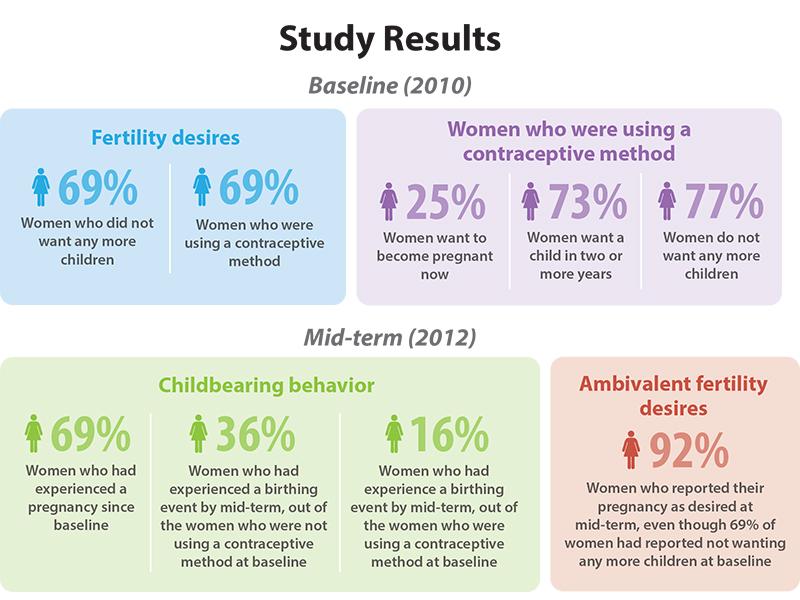Background
Unmet need is typically described as the percentage of sexually active, fecund women who say they want to delay or stop childbearing and are not using any form of family planning (FP). Measuring unmet need relies on women’s reported desires to either delay or limit future pregnancies. Women’s fertility desires fluctuate based both on individual and social influences, and often result in ambivalent fertility desires and women rationalizing future pregnancies as intended. Previous studies have shown that use of contraception was not necessarily predictive of birth outcomes for women who were unsure of whether or not they wanted another child.

Auxiliary Nurse Midwives in India provide postpartum family planning counseling as part of an integrated program with infant immunizations. Image Credits: Jennifer Applegate, 2011.
The study, using longitudinal data from four cities in Uttar Pradesh, India, examines whether fertility desires and FP use at baseline predicted subsequent childbearing behaviors in the two-year follow-up period.
The study had two key research questions:
Study Results
The use of FP methods did not seem to influence the rate of pregnancy in women who wanted to get pregnant at the time of the baseline. For women who wanted to wait for over two years before having another child, those not using FP were slightly more likely to become pregnant than those who were using FP. There was, however, a large positive correlation between the use of FP methods and a decrease in the probability of pregnancy for women who did not want any more children.
In general, women who did not want any (more) children were less likely to have a pregnancy within the two year follow-up (whether or not they used a FP method); 10% of these women experienced a birth. Women who wanted to delay childbirth or who wanted a child immediately had similar birthing rates (51% and 47%, respectively).
The study suggests that there is a large amount of post-hoc rationalization, meaning that many women who had not planned on becoming pregnant declared their pregnancy as wanted once they had conceived a child.
The data imply that the rate of “unmet need” can vary based on women’s pregnancy status. The consequence may be an over-estimation of the unmet need for FP methods.

At a roadside encampment in Jodhpur, India, an older mother breastfeeds her fifth child. Many of the poor people in this area are not aware of FP methods. Image Credits: Ira Singh, 2006.
Programmatic Implications
Some women are ambivalent regarding future childbearing desires. These women may opt for traditional FP methods that have lower effectiveness, even when more effective FP methods are available and accessible. Ambivalent women may also not want to use FP methods at all. To reach these women, FP programs should explain all the different choices in methods and dispel misconceptions. Programs may also explain the importance of spacing or limiting births.
This story was originally written by the Measurement, Learning & Evaluation Project, which evaluated the Urban Reproductive Health Initiatives (UHRIs) in Kenya, Senegal, Nigeria and India. The Challenge Initiative is charged with expanding access to the proven solutions and successes developed under the UHRIs.





